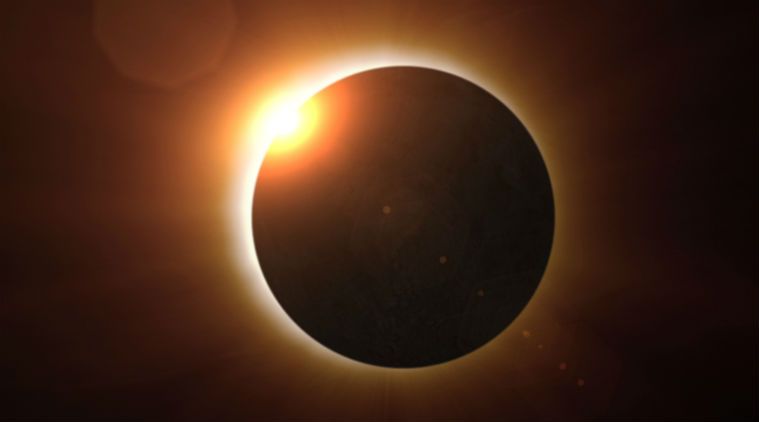
Date:
Today a total solar eclipse draws a narrow path of lunar shadow across the South Pacific Ocean heading towards South America starting at 12:55pm Eastern time. The eclipse crosses Chile, then Argentina around 3:20pm and ends off the coast of Argentina in the Atlantic Ocean at sunset. The eclipse is only visible within the 125-mile wide path.
Since humans first took notice of what happens in the sky, solar eclipses have been the most feared and the most fascinating of all. Feared because for most of our history here we were unable to predict when the frightening event would occur and we knew existence was impossible here on Earth without the sun. But fascinating because our understanding of the eclipse mechanics reveals just how the mechanics of the solar system work. Now we can predict exactly when and where they’ll occur, we can study the phenomenon scientifically, and they’ve become fun science events enjoyable - without anxiety – by millions around the world.
What IS a solar eclipse?
A solar eclipse is an astronomical event observed on Earth when light from the sun is blocked by the moon. Eclipses are all about the alignment of these three objects, which one is blocking the sun’s light, and the shadows they create. When the moon lines up directly between the Sun and the Earth, it blocks sunlight from reaching a very narrow strip of Earth for a few hours. There’s a time element involved because the earth and the moon are in constant motion. This event is a total solar eclipse; the sun is ‘eclipsed’ - completely blocked - by the moon. If the moon doesn’t exactly line up in front of the sun, only part of the sun is eclipsed and the event is a partial solar eclipse. Then there’s the very special case – the annular eclipse, where the moon lines up directly in front of the sun but is a tiny bit farther away from Earth and doesn’t completely cover the sun. In this case, a ring of sunlight encircles the moon as it stands in front of the sun.
How can our little moon block all the light from our gargantuan sun?
It’s all about relative size and long distance. The sun is 400 times farther away from us than the moon is. The sun is also 400 times bigger than the moon. This situation creates a 1 to 1 ratio of size over distance. Viewed from Earth, the two objects now appear to be the same size. So when the moon passes directly between the sun and a point on Earth, the moon appears to completely cover the sun and the sun is said to be eclipsed by the moon. If the moon were smaller or even farther away, there would be no total solar eclipses. In fact, the moon is slowly orbiting away from Earth. At some point in the earth’s future, total solar eclipses won’t happen anymore.
Why doesn’t this happen every month?
If the orbits of the Earth and the moon were on the same plane, there would be solar and lunar eclipses every month. But the moon’s orbit has a slight tilt - about 5 degrees from horizontal. This means that only two points of the moon’s orbit line up directly with the Earth’s orbit every month. If the moon’s orbit weren’t tilted, we’d have a solar eclipse every month! The tilt of the orbit, the rotation of the moon’s orbit and the Earth-Moon system’s revolution around the sun, limit the number of solar eclipses to just two or three per year. Total eclipses only happen every 18 months or so. Add in a few other orbital variations and solar eclipses in specific locations become very rare. The next two solar eclipses in North America: June 2021 and October 2023, both annular. The next total solar eclipse in North America: April 8, 2024. The last total solar eclipse in Philadelphia: 29 Jul 1478. The next? 01 May 2079!


